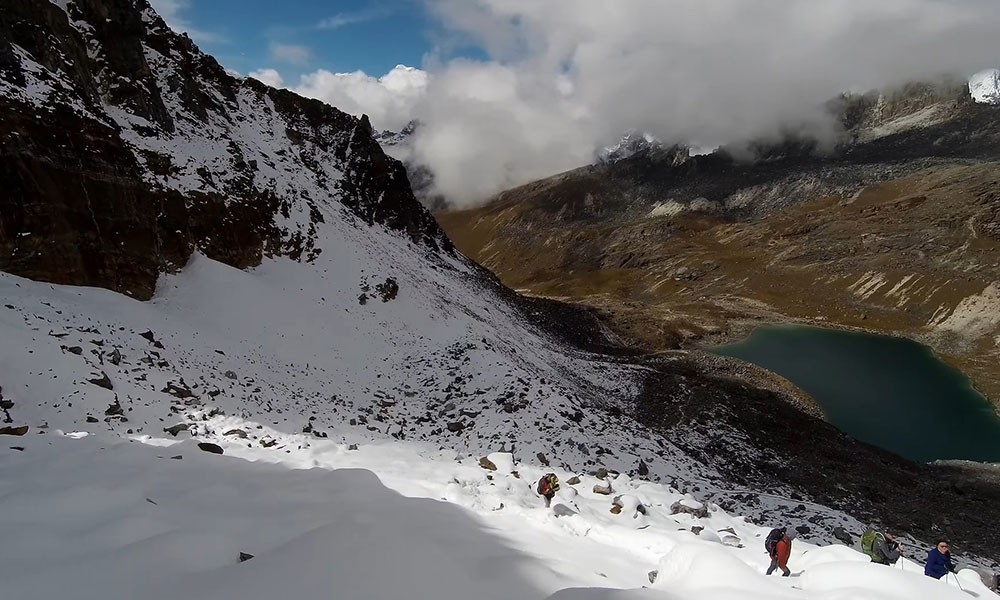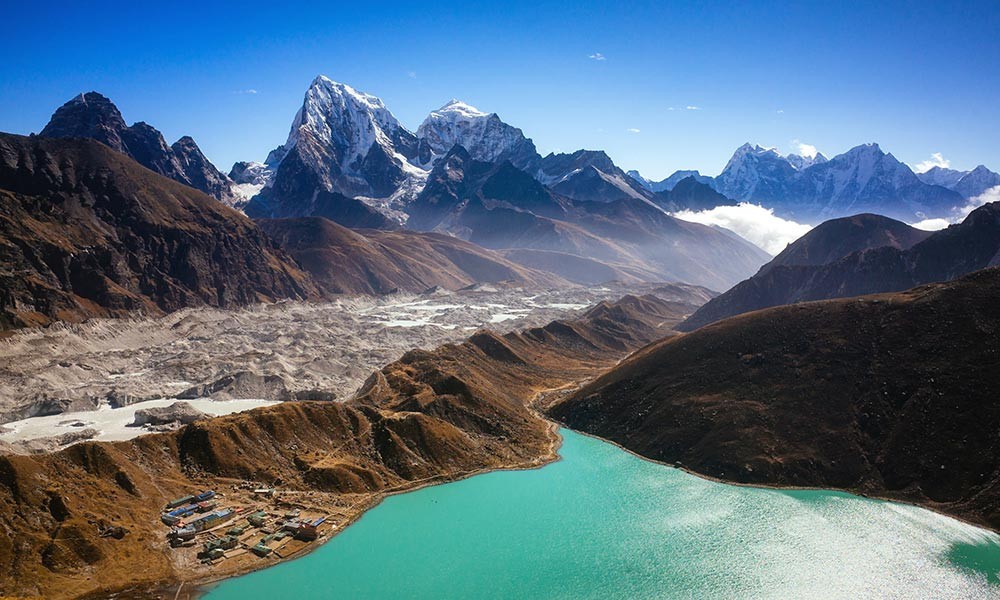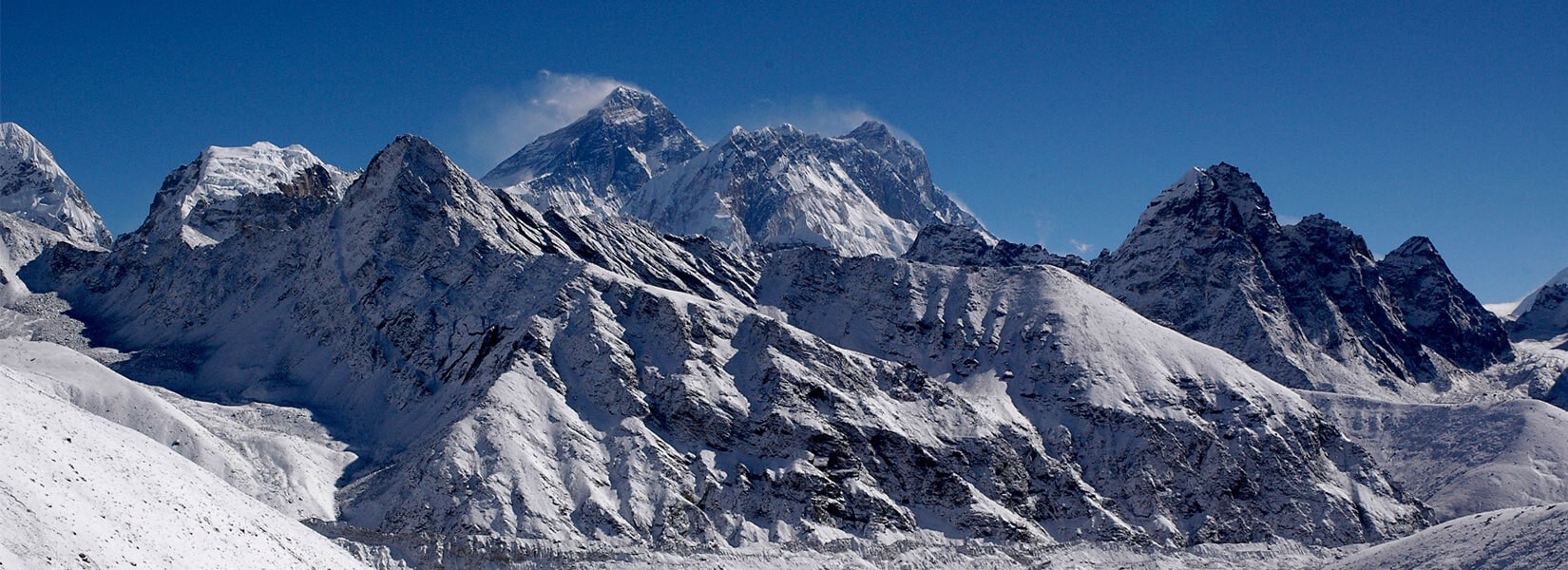 Every trail in the Everest region is challenging plus tricky, and so is the Gokyo Renjo La Pass Trek. This beautiful journey combines visiting Gokyo valley and crossing one of the three passes. Gokyo and Renjo La Pass trek is a substitute for the mainstream trails of Everest Base Camp. You escape the crowded routes and walk on a more peaceful path on this journey.
Every trail in the Everest region is challenging plus tricky, and so is the Gokyo Renjo La Pass Trek. This beautiful journey combines visiting Gokyo valley and crossing one of the three passes. Gokyo and Renjo La Pass trek is a substitute for the mainstream trails of Everest Base Camp. You escape the crowded routes and walk on a more peaceful path on this journey.
The Gokyo Renjo La Pass Trekking trials lie inside the Sagarmatha National Park of the Khumbu region. It resides in the eastern Himalayas of Nepal and near the Ngozumpa glacier. Gokyo and Renjo La Pass trek have enchanting features that make it an exclusive trip to the mountains. You can climb Gokyo Ri, visit the fourth and fifth lakes, and cross Renjo La Pass.
Gokyo Ri is a beautiful peak or viewpoint that lies above Gokyo village. It is famous for its sunrise view and marvelous sight of Lhotse, Makalu, Cho Oyu, and more. Similarly, the Gokyo Fourth lake is called Thonak Tsho, and Fifth Lake is known as Ngozuma Tsho. During your acclimatization day, you visit these two beautiful lakes.
The trails also take you over Renjo La Pass, one of the high passes of the Khumbu region. The pass lies above 5000 m, so you enjoy the stunning view of Mount Everet, Nuptse, Lhotse, Makalu, etc. The Gokyo Renjo Trek begins with a flight to Lukla, and after breakfast, you walk to Phakding. From there, you move towards Namche and rest there before climbing elevation.
The next day, you move onward to Dole, then to Machhermo, and later, climb to Gokyo. Arriving at Gokyo, you have your lunch, hike to Fifth Lake, and, the next morning, summit Gokyo Ri for a sunrise view. After a marvelous time in Gokyo, you climb Renjo La Pass and descend to Lungden. The next day you head down to Thame and visit Thame monastery for prayer.
You then head down to Namche and then to Lukla the following day. You catch the morning flight to Kathmandu from Lukla and end the trip.
Best time for Gokyo and Renjo La Pass Trek
Spring and autumn have always been considered the best time for Gokyo Renjo La Trek. Every year the Gokyo trails are packed during these seasons.
The months from March to April and September to November fall in spring and autumn. The stable weather and temperature are the major highlights of these months.
The visibility is clear, the hills have more greenery, the paths are colorful, and the mountains stand tall under the clear sky. Also, there are fewer chances of rainfall and snowfall, making the day walks comfortable.
The average temperature ranges between 11 to 18 degrees in spring, while it is about 7 to 14 degrees during autumn. The day is warm but the nights are chilly in higher regions.

Is Gokyo Renjo La Pass Trek Difficult?
Gokyo and Renjo La Pass Trek have moderate to hard level difficulty. It means the trek is suitable for both professional and novice trekkers as long as they have sound stamina and mind.
Walking each day up and down the rugged topography puts a toll on people's bodies and minds. If you are not prepared for the trek, you might lose the determination to complete it.
You need to walk at least 15 to 20 km daily for 5 to 6 hours to finish the trek peacefully. If you wish, add more days to make it easier and more relaxing. However, we do not recommend shortening the days as it might cause health-related problems, mainly for newcomers.
If Gokyo and Renjo La Pass Trek is your first trip to the mountains, be sure to have excellent build and strength. Do not visit the trails if you are doubtful or unprepared because doing so will only slow down the group.
Gokyo Renjo La Pass Trek Permits
Every trekking trail of Nepal requires one or more permits to enter a specific area, so the Gokyo Renjo La Pass Trek is no different. The Gokyo Renjo La routes reside in the Everest region, so you need to carry two permits:
Sagarmatha National Park entry permit: This permit is necessary to enter the national park and conservation area. You can buy this from Nepal Tourism Board in Kathmandu or Monjo. This permit costs about NPR 3000, USD 30 for foreigners, and NPR 1500, USD 15 for SAARC people.
Khumbu Pasang Lhamu Rural Municipality permits: This permit replaced TIMS Card and is required to enter the different villages of the Khumbu region. You can buy this permit only from Lukla. It costs about NPR 2000, USD 20 for everyone.
P.S. All the fees are to be paid in Nepalese currency.






